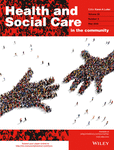Technology and rehabilitation training for community health workers: Strengthening health systems in Malawi
Abstract
Community health workers (CHWs) have been effectively utilised in resource-limited settings to combat a growing demand for health access that cannot be met by the current workforce. The purpose of this study was to evaluate a CHW training programme in Malawi that integrated technology into rehabilitation care delivery. This was a retrospective cross-sectional study of a training programme conducted in December 2018. The participants were a convenience sample of all active home-based palliative care CHWs at St. Gabriel's Hospital (n = 60). The data collected included the following: a written pre- and post-knowledge test, skills competency checklist and a post-training programme survey. Descriptive frequencies described skill competency and quantitative responses from the post-training programme survey. Paired t test (α = 0.05) analysis determined the significance of knowledge acquisition. Themes in the narrative responses in the post-training survey were identified. Both training programme groups showed significantly greater knowledge on the post-test (M = 9.50, SD = 0.861; M = 9.43, SD = 0.971) compared to the pre-test (M = 7.97, SD = 1.351; M = 7.90, SD = 1.900); t(29) = 6.565, p < .001; t(29) = 4.104, p < .001 for Group 1 and Group 2, respectively. All participants demonstrated skill competency in 100% of the skills. All participants responded that the training programme helped them review skills and understand how to use technology ‘A lot’ on a Likert scale (no, a little, some, a lot). Facilitators of their work included training programmes, phones, communication with the hospital and collaboration amongst CHWs. Barriers included transportation needs, lack of patient care supplies and lack of caregiver compliance. Overall, utilisation of their knowledge and skills from the training programmes helped their patients make improvements in mobility and function that are meaningful to their quality of life in the village. This study highlights the importance of assessing programmes in low-resource settings with a focus on feasibility and developing local capacity.
CONFLICT OF INTEREST
The authors have no conflicts of interest to disclose.




